Understanding i7 Processor Speed: Insights and Implications
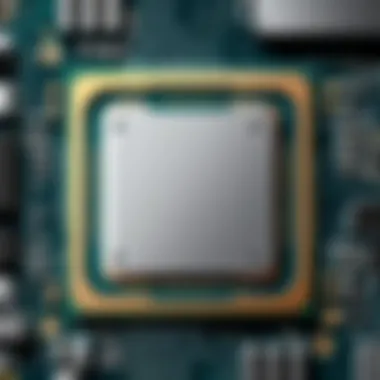
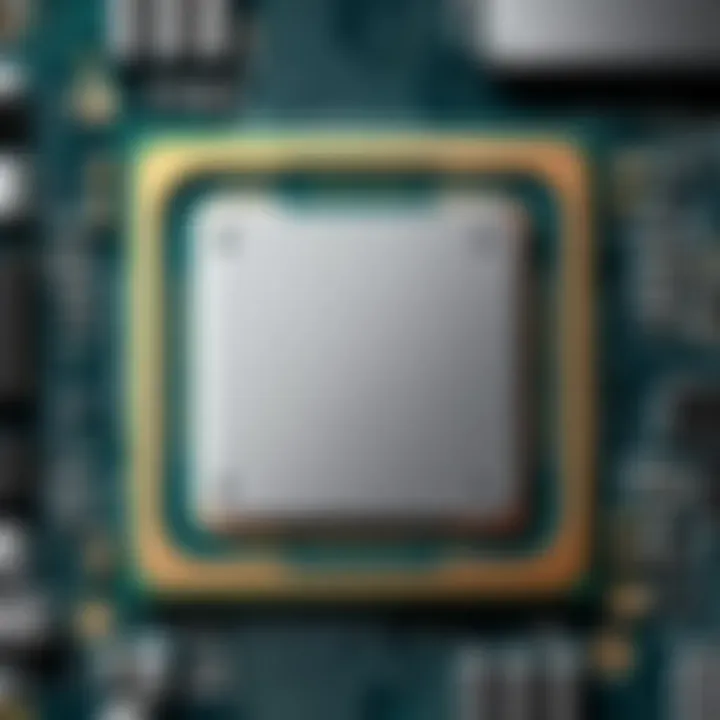
Intro
The speed and performance of i7 processors are critical for many professionals working in the information technology sector. As technology continues to advance, understanding processor capabilities becomes increasingly important. This article aims to explore the intricacies of i7 processor speeds, examining various aspects that affect overall performance metrics. IT experts will find valuable insights, especially regarding productivity and efficiency implications.
This piece will also look at the architectural design of i7 processors and compare them with other processors available on the market. Moreover, we will discuss future trends and provide guidance on selecting appropriate processors for specific tasks. With these insights, readers will be better equipped to make informed decisions about their computing needs.
Features Overview
Key Specifications
The i7 processor series from Intel is known for its impressive specifications that cater to a wide array of computing tasks. Here are some critical specifications:
- Core Count: Typically, i7 processors have between 4 to 12 cores, enabling efficient multitasking.
- Thread Count: Many i7 models support Hyper-Threading, allowing each core to handle two threads simultaneously, thus maximizing processing power.
- Base and Turbo Frequencies: Base clock speeds generally range from 2.6 GHz to 3.6 GHz, with Turbo Boost capabilities clocking speeds up to 5.0 GHz and beyond.
- Cache Size: i7 processors usually come with 8MB to 16MB of Intel Smart Cache, enhancing data retrieval and processing.
These specifications reflect the potential that i7 processors possess in handling intensive applications, making them suitable for gaming, video editing, and software development.
Unique Selling Points
Several factors distinguish Intel's i7 processors in the marketplace:
- Performance Balance: The combination of multi-core designs and high clock speeds offers a robust balance between power consumption and performance.
- Integrated Graphics: Most i7 processors come equipped with Intel UHD Graphics, allowing for decent graphical performance without the need for an additional GPU.
- Advanced Technologies: Features like Intel Turbo Boost, Intel Optane support, and enhanced security measures contribute to its appeal in professional environments.
- Versatile Usage: Suitable for a range of tasks from casual gaming to complex data analysis, i7 processors provide a flexible solution for different user needs.
Performance Analysis
Benchmarking Results
Performance benchmarks provide insights into how well i7 processors perform compared to their counterparts. Popular tools like Cinebench, PassMark, and Geekbench display raw performance metrics through standardized tests. Results generally indicate that i7 processors offer impressive results in multi-core tasks, outperforming many mid-range processors.
For instance, a recent benchmark of the Intel Core i7-11700K shows:
- Cinebench R20 multi-core score: Around 4,950
- PassMark single-thread rating: Approximately 3,066
These benchmarks illustrate the i7's capacity for handling demanding workloads effectively.
Real-world Scenarios
In practical situations, the advantages of i7 processors become apparent. For software developers, working with integrated development environments alongside virtualization tools can strain less powerful processors. i7 processors allow for smoother experiences, reducing lag and improving productivity.
Similarly, creative professionals using software such as Adobe Premiere Pro or Autodesk Maya will appreciate the power of i7 for rendering and processing tasks efficiently.
"In the fast-paced world of tech, having a strong processor like the i7 isn't just an advantage—it's becoming a necessity."
Furthermore, gaming performance also highlights the capabilities of i7 processors. They can deliver high frame rates and responsiveness, particularly when paired with modern graphics cards. This aspect is vital for serious gamers and developers focused on game design.
Intro to i7 Processors
The i7 processors from Intel represent a significant milestone in personal computing. They are known for their high performance and efficiency, making them popular among both enthusiasts and professionals. In this section, we will discuss the importance of i7 processors in today's tech landscape. Their architecture, capabilities, and the advancements they have undergone over the years play a critical role in various computing tasks.
Understanding the i7 processors allows IT professionals to make informed decisions about hardware selection. As software becomes increasingly sophisticated, the demand for robust processing power continues to grow. The i7 processors meet this demand by balancing speed and energy efficiency. This balance is crucial in professional environments where productivity depends on reliable computing resources.
Moreover, the development of the i7 processors reflects broader trends in technology. These trends include the shift towards multicore processing, improvements in integrated graphics, and the growing importance of thermal management. Examining these elements provides insights into the current computing landscape and helps predict future trends.
The performance of i7 processors also has implications for software developers and application designers. As they develop new solutions, understanding the capabilities of these processors can guide optimizations. This section sets the stage for a deeper exploration of their architecture and capabilities in the following sections.
Historical Context
The i7 processor family was first introduced by Intel in November 2008. This launch marked a significant evolution from previous generations of Intel CPUs. Originally, Intel had the Core brand divided into Core 2 Duo and Core 2 Quad. The arrival of the i7 processor consolidated these lines under a single naming convention that indicated an increased focus on performance.
Early versions of i7 processors used the Nehalem architecture. This architecture integrated a memory controller directly into the CPU, improving latency and memory bandwidth. This change was a key development, as it allowed for faster data processing and better overall performance.
"The introduction of the i7 processor family represents a turning point in CPU design and performance."
Generational Development
Since the inception of the i7 line, there have been several generations, each building on the strengths of the previous ones. Each generation typically incorporates architectural improvements, enhanced power efficiency, and increased core counts. For instance, with the introduction of the Sandy Bridge architecture, users saw a noticeable increase in performance due to better cooperation between cores and the CPU's ability to handle multiple threads simultaneously.
Following Sandy Bridge, further enhancements were made with successive generations. For example, the Haswell generation introduced significant improvements in power consumption and integrated graphics capabilities. This focus on efficiency has resonated well with users, especially in mobile devices and laptops.
It is also worth noting that with each new generation, Intel has adjusted its Turbo Boost Technology. This technology allows the processor to dynamically increase its speed when required, ensuring that applications demanding higher performance operate smoothly.
In summary, the historical context and generational development of i7 processors highlights their journey and progressive enhancements. Each generation continues to push boundaries, making them a vital choice for demanding computational tasks.
Understanding Processor Speed
Processor speed is a critical factor when evaluating the performance of any computing system, particularly for IT professionals and tech enthusiasts. It directly influences how efficiently a processor can execute tasks and handle applications, making it central to daily operations and productivity. Understanding processor speed extends beyond just a number on the packaging; it involves various metrics and technologies that contribute to the overall effectiveness of a processor.
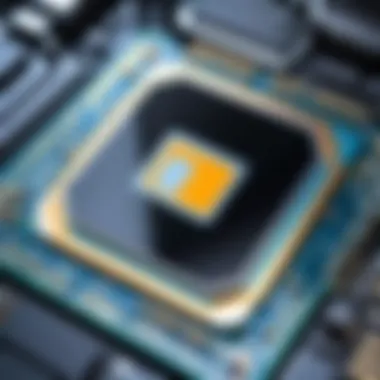
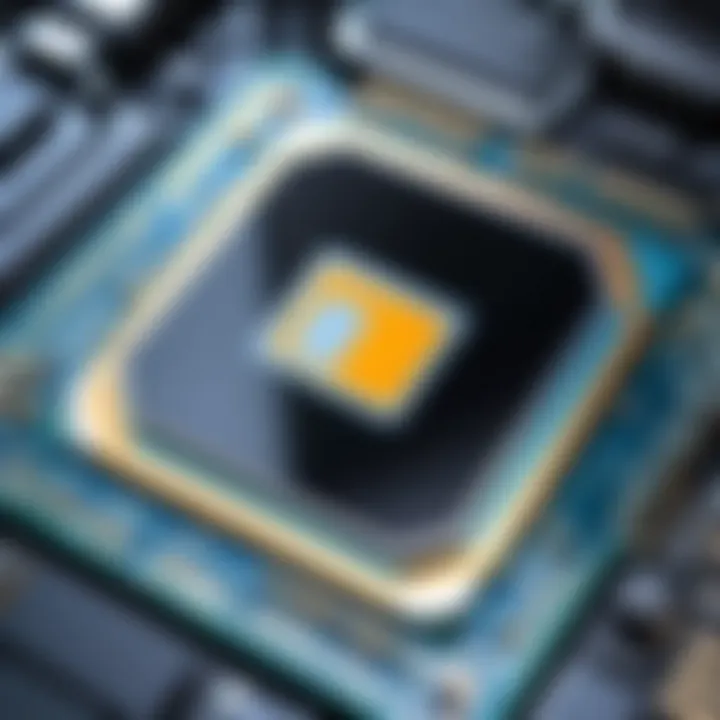
When it comes to i7 processors, several key elements highlight their speed capabilities. First, the definition of processor speed encompasses different measurements, such as clock speed, performance per core, and efficiency under various loads. Recognizing these distinctions can help users identify which processor aligns with their specific needs.
Furthermore, the advantages of comprehending processor speed are numerous. For instance, knowing how to gauge speed allows professionals to make informed decisions when purchasing or upgrading equipment. This insight can ultimately lead to improved productivity and better system performance for demanding tasks.
Another consideration is the evolution of processor speed technology. Advances such as Turbo Boost technology have transformed how we perceive and utilize speed, challenging traditional metrics and user expectations. As the technology landscape continues to shift, understanding these changes becomes essential for choosing the right processor.
Here are several benefits of understanding i7 processor speed:
- Informed Selection: Helps in choosing the correct processor based on performance needs.
- Optimized Performance: Understanding speed can aid in setting up systems for the highest efficiency.
- Better Resource Allocation: Knowing the speed parameters leads to smarter hardware investments.
- Future-Proofing: Awareness of speed evolution helps to choose processors that will remain relevant in the upcoming years.
Overall, a thorough understanding of processor speed allows users to navigate the complexities of technology effectively.
What is Processor Speed?
Processor speed refers to the rate at which a CPU executes instructions. Commonly measured in gigahertz (GHz), this indicates how many billion cycles a processor can perform in one second. While higher numbers generally suggest faster processing, it is crucial to consider the context of these figures. Not all tasks are equally sensitive to speed, and various applications may benefit differently from a faster processor.
The Role of Clock Speed
Clock speed is one of the primary determinants of processor speed. It indicates the maximum speed at which a processor can complete instructions, providing a direct measure of the frequency of cycles. However, clock speed alone does not determine overall performance. Factors like core count and architecture also play significant roles. For instance, a higher clock speed in a dual-core processor may not outperform an i7 processor with lower clock speed and more cores in multithreaded applications. Understanding this interplay is vital for a comprehensive grasp of performance.
Turbo Boost Technology
Turbo Boost is a technology found in many Intel processors, including the i7 series, which allows a processor to operate above its base clock speed when demanding workloads arise. This dynamic adjustment means that, during less intense tasks, the CPU can conserve energy, but it accelerates performance when needed. This technology effectively enhances processing capability without requiring constant high power. For users who engage in demanding applications, such as gaming or video editing, Turbo Boost technology represents a significant aspect of how i7 processors maintain competitive speed.
Architecture of i7 Processors
The architecture of i7 processors is fundamental for understanding their performance and capabilities. This section analyzes core features that influence speed and efficiency. The principal elements include core count, cache memory, and integrated graphics, all of which contribute significantly to the processor’s overall functionality.
Core Count and Multithreading
Core count plays a crucial role in determining the processing power of i7 processors. More cores allow for increased multitasking and better performance in parallel processing tasks. For IT professionals dealing with data-heavy applications, having multiple cores is advantageous.
Multithreading enhances this benefit. Intel's Hyper-Threading technology allows each core to handle two threads simultaneously. This method effectively doubles the thread count for these processors, yielding better performance in applications that can leverage multithreading.
However, not all applications benefit from this architecture. Tasks that do not utilize multiple threads may not see the same improvements. Therefore, understanding workloads is essential when considering core count for specific applications.
Cache Memory and Its Impact
Cache memory is another vital aspect of i7 processor architecture. Cache acts as a temporary storage area, enabling faster access to frequently used data. The processors generally have multiple levels of cache—L1, L2, and L3—each serving different functions.
- L1 Cache: Typically the smallest and fastest, providing immediate access to data for the processor.
- L2 Cache: Slightly larger but slower than L1, it holds data that is not accessed as frequently.
- L3 Cache: Shared across cores, it facilitates communication among them but has the largest size and slowest access times.
The size and speed of cache memory significantly influence the performance of applications. A larger L3 cache capacity can lead to noticeable enhancements in tasks demanding high-speed data access, making it a crucial consideration for those looking to optimize performance.
Integrated Graphics Capabilities
Modern i7 processors often come with integrated graphics capabilities, allowing them to handle graphics processing without dedicated graphics hardware. This feature is particularly beneficial for users who require decent visual performance for everyday tasks but do not engage in high-end gaming or graphics design.
The integrated graphics unit in i7 processors can handle a wide range of applications seamlessly. While professionals working with intensive graphical workloads might still need dedicated graphics cards, casual users will find integrated solutions sufficient for most tasks, including light gaming and video editing.
The architectural design of i7 processors ensures a balance between performance and efficiency, making them suitable for a variety of computing tasks.
In summary, understanding the architecture of i7 processors is essential for evaluating their capabilities in real-world applications. Core count enables multitasking, cache memory optimizes data access, and integrated graphics provide acceptable performance for general tasks.
Benchmarking i7 Processors
Benchmarking i7 processors is vital for discerning their true performance in various computing scenarios. Benchmarking offers a systematic method by which one can assess the efficiency and speed of processors, particularly in the i7 line. Such evaluations are not merely academic exercises; they provide pragmatic insights into how these processors handle real-world workloads.
When IT professionals and tech enthusiasts consider how an i7 processor fits their needs, understanding its benchmark results can significantly influence purchasing decisions. Performance metrics gleaned from benchmarks can inform users about the suitability of a processor for specific applications, like gaming, content creation, or software development. Thus, benchmarking serves as a bridge between theoretical specifications and practical performance.
Assessment Metrics
Assessing the performance of i7 processors requires a variety of metrics. Among the most common are:
- Cinebench
This benchmark evaluates a processor's rendering capabilities. A higher score often indicates better performance in tasks requiring heavy computational power. - Geekbench
It provides a multicore and single-core score, helping users to understand how the processor performs in both light and heavy tasks. - PassMark
This gives an overall performance score based on multiple tests that encompass CPU speed, memory, and graphics capabilities.
These metrics allow users to compare the i7's capabilities against other processors in the market. Factors such as core count, clock speed, and thermals all play crucial roles in driving these scores, making it essential to analyze them with care.
Comparison with Other Processors
When comparing i7 processors with alternatives, it's evident that various architectures serve distinct purposes. Comparing i7 against AMD's Ryzen series often reveals different strengths. While an i7 may excel in tasks needing high single-thread performance, Ryzen processors may offer superior multi-threaded performance in certain applications.
Additionally, considering previous generations of i7 processors remains relevant. For instance, an i7-11700K might show a marked improvement over the i7-9700K in rendering tasks and gaming, thanks to advancements in clock speeds and integrated technologies.
Key Considerations in Comparison:

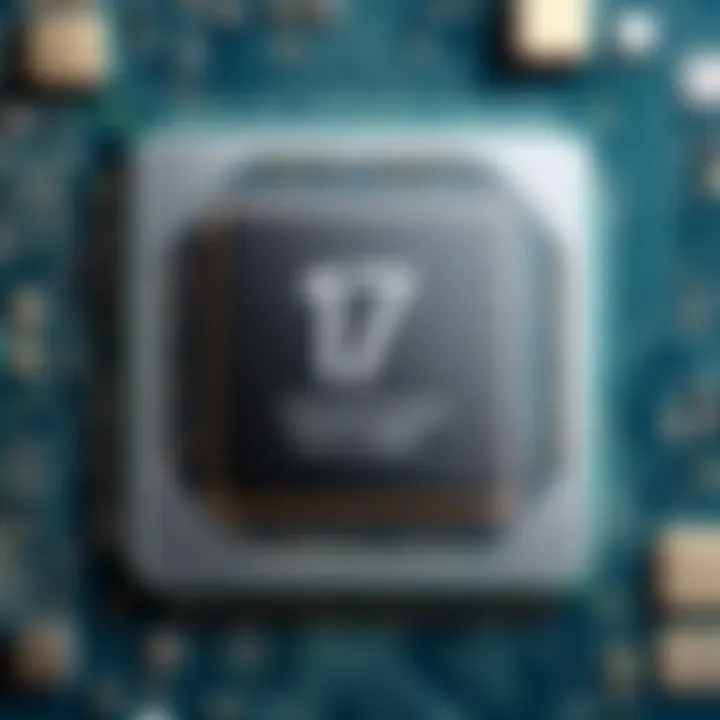
- Performance per Dollar
- Power Consumption
- Thermal Performance
Real-World Performance Tests
The most telling evaluations come from real-world performance tests. These tests simulate everyday tasks that users might encounter, painting a fuller picture of how i7 processors perform under stress.
For example, in gaming scenarios, an i7 processor might be paired with varied GPUs to assess frame rates across multiple titles. Likewise, in professional applications like video editing, rendering a project can showcase the benefits of multi-threading capabilities.
Additionally, tools like FRAPS for gaming performance and Adobe Premiere's benchmark for content creation can provide insights into CPU performance specifically linked to common use cases.
Real-world performance tests enhance the relevance of benchmark data by integrating actual usage scenarios.
Optimizing Performance
Optimizing performance is crucial for those utilizing i7 processors. This segment examines how performance can be enhanced through various strategies, leading to improved efficiency and output. Understanding the nuances will enable users to harness the full potential of their processors while considering important factors like system stability and longevity.
Overclocking Fundamentals
Overclocking involves increasing the clock speed of the processor beyond the manufacturer's specified limits. It can provide additional performance benefits, particularly for demanding applications such as gaming or complex software tasks. To overclock an i7 processor, users often adjust parameters in the BIOS or use specialized software. This process requires careful planning, as improper overclocking can lead to system instability and hardware damage.
Benefits of Overclocking:
- Enhanced performance for demanding applications.
- Potentially lower time for processes, aiding productivity.
- Fine-tuning hardware capabilities to match specific user needs.
Considerations for Overclocking:
- Requires adequate cooling solutions to prevent overheating.
- May void warranties from manufacturers.
- Not all motherboards support overclocking features.
Thermal Management
Thermal management is a critical aspect when discussing processor performance. As i7 processors operate, they generate heat which can hinder performance if not properly managed. High temperatures can lead to throttling, where the processor reduces its speed to avoid damage.
Implementing effective cooling systems can mitigate this risk. Common methods include:
- Air cooling using heatsinks and fans, which is cost-effective.
- Liquid cooling that offers superior performance but can be more complex to install.
Key benefits of proper thermal management:
- Maintains optimal performance levels by avoiding thermal throttling.
- Extends the lifespan of the processor by keeping temperatures low.
- Enables consistent operation during high-intensity tasks.
System Configuration and Compatibility
For optimal performance, ensuring that the system configuration is compatible with the i7 processor is essential. Various components, including the motherboard, RAM, and power supply, play critical roles. Each part must work in harmony to fully benefit from the capabilities of the i7 processor.
Key components to consider:
- Motherboards: Ensure that the motherboard supports the specific generation of the i7 processor.
- RAM: Fast and sufficient memory complements processing power and minimizes bottlenecks.
- Power Supply: A robust power supply is necessary to meet the energy demands of the processor during peak performance.
Aligning these components can lead to increased efficiency and performance, while mismatches can result in underwhelming results.
"Proper configuration allows users to experience the full benefits of i7 processors, maximizing their potential in various applications."
Applications of i7 Processors
The role of i7 processors in modern computing environments cannot be overstated. Their speed and performance capabilities make them suitable for a variety of applications. IT professionals and tech enthusiasts should understand these applications to optimize their usage. The key areas include gaming, professional software usage, and content creation. Each area highlights specific benefits and considerations that guide users in leveraging the power of i7 processors effectively.
Gaming Performance
Gaming represents a significant area where i7 processors excel. Gamers demand high performance to run graphics-intensive titles smoothly. I7 processors provide a high core count and advanced multithreading capabilities, which are essential for handling complex game mechanics and large open-world environments.
- Frame Rate Consistency: I7 processors can deliver consistent frame rates, reducing lags and ensuring a seamless gaming experience.
- High-Resolution Gaming: Users can expect improved performance in high-resolution settings, like 4K gaming.
- Enhanced Multi-Tasking: Gamers can benefit from playing while streaming or running additional applications without noticeable performance drop.
In summary, for serious gamers, an i7 processor can significantly enhance gaming performance.
Professional Software and Workloads
In professional settings, i7 processors are invaluable for running demanding software suites. This includes applications for engineering, design, data analysis, and other technical tasks. The performance implications are profound:
- CAD and Rendering Applications: Programs like AutoCAD and SolidWorks take advantage of the speed and multi-core capabilities of i7 processors for rendering complex designs quickly.
- Data Analysis: For tasks involving spreadsheets, databases, and analytics tools like Tableau or SQL Server, i7 processors minimize data processing time, maximizing productivity.
- Job Security: As more fields rely on advanced computation, having an i7 processor can provide a competitive edge and future-proof your setup.
With these processors, professionals can accomplish their workloads more efficiently.
Content Creation and Multimedia
Content creation is another domain where i7 processors shine. The demands of photo and video editing require significant processing power. Creative professionals often use software like Adobe Creative Cloud, including Premiere Pro and Photoshop, which benefit from the powerful capabilities of i7 processors.


- Faster Rendering Times: Editing high-definition video requires extensive CPU resources. I7 processors streamline this process, allowing creators to render projects swiftly.
- Real-Time Editing: With the robust performance of i7 processors, multimedia professionals can edit multiple streams of high-res footage simultaneously without lag.
- Enhanced Audio Processing: Programs for audio production, such as Ableton Live or Pro Tools, also benefit from an i7's performance, enabling smoother playback and recording experiences.
Therefore, i7 processors serve as a cornerstone for those engaging in content-heavy tasks.
"The capabilities of i7 processors not only enable faster performance but also inspire greater creativity across various fields."
Future of Processor Technology
The realm of processor technology is undergoing rapid growth and evolution. For IT professionals and tech enthusiasts, staying informed about future advancements is not just beneficial; it is essential for making informed decisions. The future of processor technology will not only influence the upcoming generation of i7 processors but also redefine computing efficiency and application versatility.
Emerging Technologies
Emerging technologies play a vital role in shaping the future of processors. These advancements aim to enhance speed, efficiency, and multi-functionality. Some key areas of development include:
- Quantum Computing: This technology has the potential to revolutionize computing power. It can solve complex problems that are currently intractable for classical computers.
- 3D Chip Design: Layering chips vertically can increase density, reduce heat generation, and improve performance.
- Hybrid Architectures: Combining different cores and technology types can lead to smarter, more efficient processing environments.
By utilizing these technologies, future processors will be designed to cater to increasingly complex workloads and multitasking requirements, thereby making them indispensable tools for IT professionals.
AI and Machine Learning Integration
The integration of Artificial Intelligence (AI) and Machine Learning into processor technology is another crucial aspect of its future. As industries leverage AI for diverse applications, processors must evolve to handle the increasing computational demands. Benefits of this integration include:
- Enhanced Processing Speed: AI-driven optimizations can significantly boost processing performance, allowing for quicker data analysis and response times.
- Improved Energy Efficiency: Intelligent algorithms can optimize power consumption, extending hardware longevity and reducing costs.
- Adaptive Performance: Processors can learn from usage patterns and automatically optimize operations for specific tasks, ensuring a more tailored user experience.
"The future belongs to those who prepare for it today."
By preparing now, professionals can ensure their skills remain relevant and their tools remain effective.
Choosing the Right i7 Processor
Selecting an appropriate i7 processor is critical for maximizing the effectiveness of computing tasks, particularly in professional environments. The range of i7 processors available can make the decision daunting. Factors such as performance requirements, project specificity, and budget constraints strongly influence this choice. You need a processor that not only fits your current needs but also accommodates potential future demands. Evaluating various models can help ensure optimal performance while managing costs effectively.
Identifying Use Cases
Understanding the intended applications of the i7 processor is fundamental in this decision-making process. Use cases can vary significantly depending on the tasks you want to perform. For instance:
- Gaming: If high frame rates and quick load times are priorities, processors with higher clock speeds might be necessary.
- Content Creation: Tasks such as video editing or 3D rendering benefit from i7 processors with more cores and threads, allowing for better multitasking.
- Everyday Tasks: For basic usage like browsing, document editing, and streaming, a lower-tier i7 might suffice.
In general, understanding how the processor fits into the work you do is vital for making an informed choice.
Budget Considerations
Price is often a decisive factor when selecting any computer component. i7 processors span a wide range of prices based on specifications and generation. It is important to weigh performance against cost. You can adopt the following strategies:
- Evaluate Current Needs: Assess whether a higher-priced model offers clear advantages for your intended use.
- Consider Older Generations: Often, last year's models can deliver similar performance at a lower price.
- Look for Sales: Promotions and sales events can yield significant discounts.
Balancing price with performance is necessary for making a choice that aligns with your budget while still providing solid capabilities.
Future-Proofing Your Investment
Investing in an i7 processor is often a long-term commitment. To future-proof your purchase, it is prudent to plan for upcoming trends and software requirements. Consider the following:
- Assess Upgrade Paths: Opt for models that allow you to upgrade components easily in the future.
- Explore Compatibility: Make sure your selected i7 processor is compatible with the latest motherboards and RAM standards.
- Stay Informed: Follow technology trends to know when new architectures or significant enhancements come into play.
Future-proofing ensures that your investment remains relevant and powerful for years to come, allowing you to handle new developments that arise in technology.
Culmination
The topic of speed in i7 processors is crucial for understanding their overall performance and capabilities. This article emphasized various aspects of this speed, providing a clear view of how it integrates with everyday computing tasks, particularly for IT professionals and tech enthusiasts. When examining processor speed, key elements such as clock speed, core count, and technology like Turbo Boost emerge as essential factors. These elements directly influence not just the processor's capabilities but also user experience in both personal and professional settings.
Benefits of Understanding i7 Speed:
- Enhanced Productivity: Knowledge of processor specifications helps in selecting the right model for specific tasks, optimizing workflows.
- Cost Efficiency: Making informed decisions about which processor to invest in can prevent overspending on unwarranted features.
- Future-Proofing: By recognizing how processor speed evolves, one can better anticipate future needs and technological advancements.
It is evident that the implications of i7 processor speed extend beyond theoretical discussions. They have practical consequences for various applications, from gaming to professional workloads. By synthesizing the insights shared in this article, readers can gain a greater appreciation of how these specifications impact real-world scenarios. Thus, whether it is for high-end gaming or rigorous data processing, understanding processor speed becomes a vital consideration for maximizing efficiency and performance in today’s fast-paced technological landscape.
"Processor speed is not just numbers; it's the foundation of performance that drives productivity in diverse settings."
Importance of References
Including references is essential for multiple reasons:
- Credibility: Citing reputable sources enhances the trustworthiness of the information. Readers can be more confident in the quality of the content when it stems from established, authoritative sources.
- Depth of Knowledge: References allow readers to explore beyond the surface. They can access additional resources to gain a more profound understanding of complex topics such as i7 processor architecture and speed metrics.
- Validation of Claims: In the tech field, backing up statements with data or studies is necessary. This is especially true when discussing performance benchmarks or comparisons with other processors. Accurate references validate key arguments made in the article.
Considerations when Using References
When incorporating references into technical articles, there are a few essential considerations:
- Relevance: Ensure that the cited materials are directly related to the topic discussed. Irrelevant references can mislead readers and dilute the article's effectiveness.
- Recency: Technology evolves rapidly, making it critical to reference the most updated sources. Relying on outdated materials can result in the dissemination of inaccurate or stale information.
- Diversity of Sources: Using a mix of sources, such as academic journals, technical websites, and industry reports, enriches the narrative. This variety provides a broader perspective and demonstrates thorough research.
"Quality references are not just footnotes; they are the pillars on which arguments stand."
In summary, the sections of this article discussing i7 processor speed and its implications are buttressed by well-chosen references. This ensures readers appreciate not only the depth of information provided but also can follow up and engage with the material in a more meaningful way. Special attention should be given to how these references enhance the clarity and reliability of the information presented.



